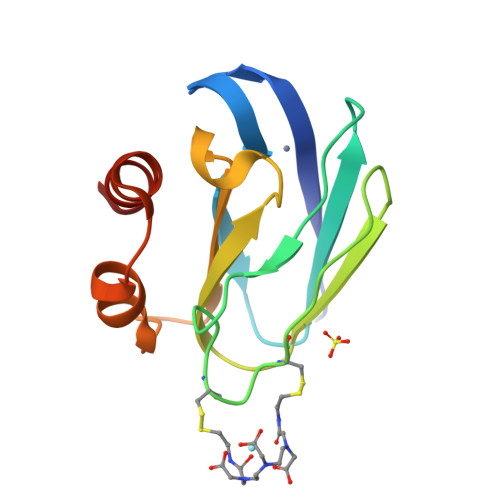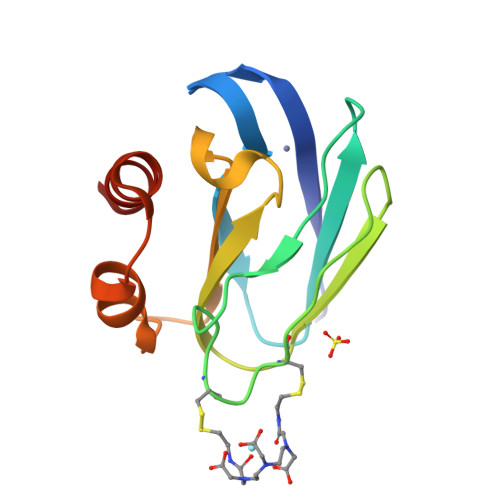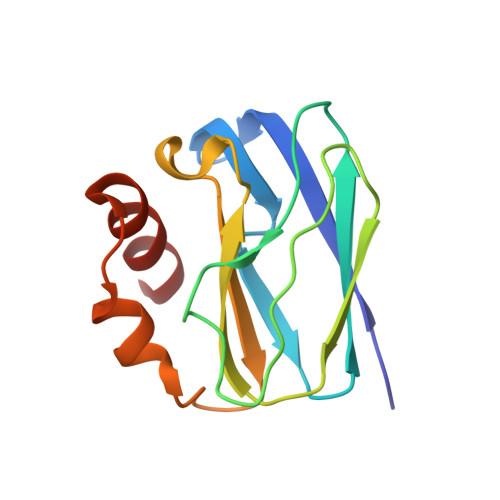A caged lanthanide complex as a paramagnetic shift agent for protein NMR.
Prudencio, M., Rohovec, J., Peters, J.A., Tocheva, E., Boulanger, M.J., Murphy, M.E., Hupkes, H.J., Kosters, W., Impagliazzo, A., Ubbink, M.(2004) Chemistry 10: 3252-3260
- PubMed: 15224334
- DOI: https://doi.org/10.1002/chem.200306019
- Primary Citation of Related Structures:
1PY0 - PubMed Abstract:
A lanthanide complex, named CLaNP (caged lanthanide NMR probe) has been developed for the characterisation of proteins by paramagnetic NMR spectroscopy. The probe consists of a lanthanide chelated by a derivative of DTPA (diethylenetriaminepentaacetic acid) with two thiol reactive functional groups. The CLaNP molecule is attached to a protein by two engineered, surface-exposed, Cys residues in a bidentate manner. This drastically limits the dynamics of the metal relative to the protein and enables measurements of pseudocontact shifts. NMR spectroscopy experiments on a diamagnetic control and the crystal structure of the probe-protein complex demonstrate that the protein structure is not affected by probe attachment. The probe is able to induce pseudocontact shifts to at least 40 A from the metal and causes residual dipolar couplings due to alignment at a high magnetic field. The molecule exists in several isomeric forms with different paramagnetic tensors; this provides a fast way to obtain long-range distance restraints.
Organizational Affiliation:
Leiden Institute of Chemistry, Gorlaeus Laboratories, Leiden University, P.O. Box 9502, 2300 RA Leiden, The Netherlands.




















